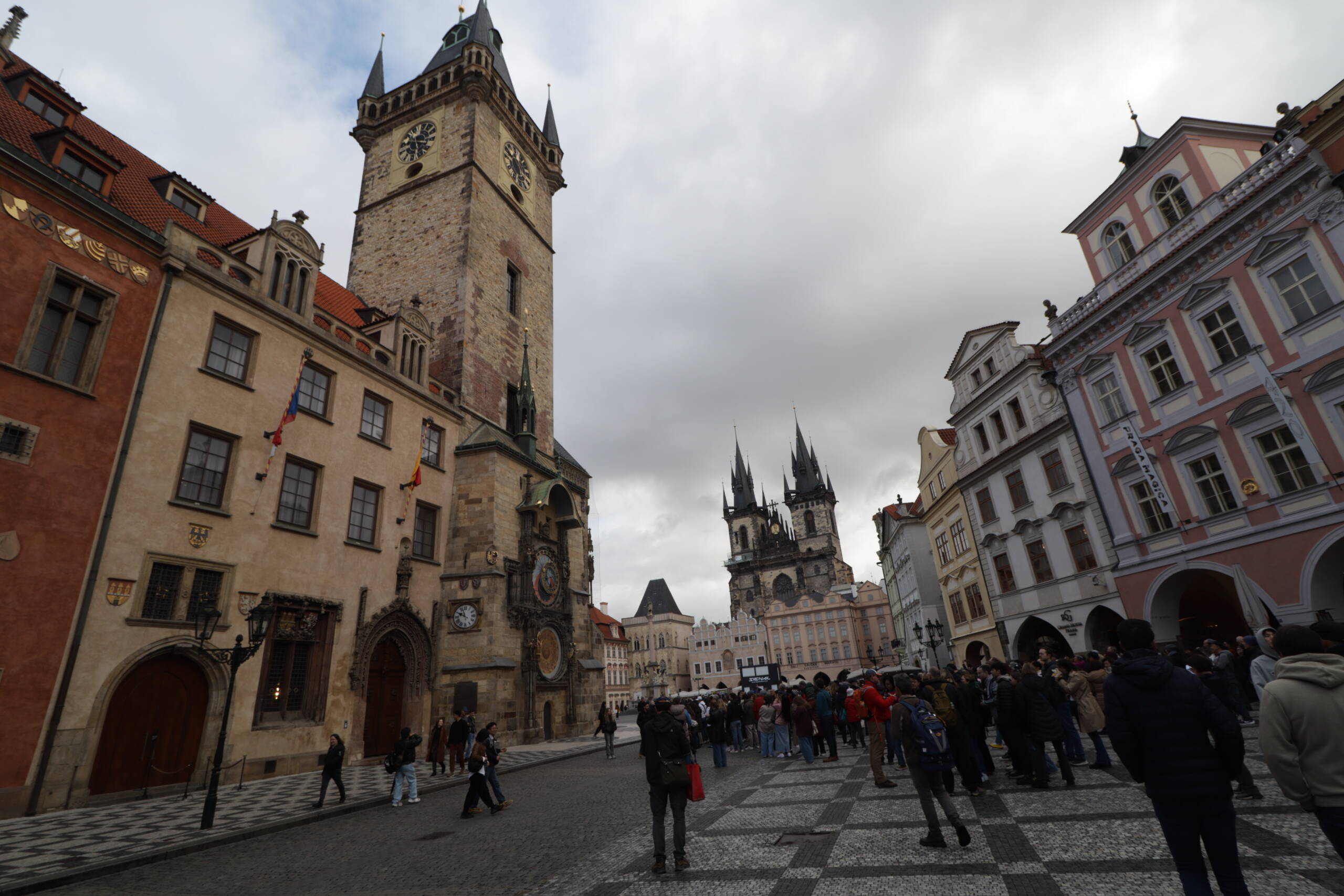Prague is one of those cities that makes you feel like you’ve stumbled into a dreamscape—cobblestones that tilt underfoot, towers that stretch higher than you imagined, spires so sharp they seem to puncture the clouds. When you point a wide-angle lens at it, the city doesn’t flatten neatly into a postcard. Instead, it bends and sways, as though it wants to remind you that it has lived through centuries of kings, wars, and tourists all jostling through its squares. And honestly, I don’t always correct those bends in post. I let Prague lean the way it wants to.

https://pho.tography.org/2025/10/27/not-correcting-lens-distortion/
Take the Old Town Square on a heavy, overcast afternoon. The Astronomical Clock pulls crowds into its orbit, tourists craning their necks, phones lifted high, waiting for that brief mechanical show that has been happening for over 600 years. My camera captures the square with the Old Town Hall tower rising stiff but skewed, the painted houses leaning into each other like gossiping neighbors, and the Church of Our Lady before Týn looming in the background with spires that look even taller than they really are. The lines are off, no doubt about it. But isn’t that exactly how it feels to stand there? You’re swallowed by angles, pulled in by gravity, surrounded by architecture that doesn’t apologize for showing its age.
If I corrected the distortion, the tower would stand politely straight, the facades would become proper, and the whole scene would lose that sense of exaggerated awe. Part of what makes Prague unique is precisely that it isn’t perfect—it’s a city where Gothic drama collides with Baroque excess and Art Nouveau whimsy. A wide-angle distortion somehow honors that mixture. It says, “this place isn’t supposed to line up neatly.” Straightening the lines risks flattening the mood, sanding off the city’s character.
I’ve always thought Prague feels slightly theatrical, like a stage where history never really ended. Distortion amplifies that feeling. The Old Town Square doesn’t just hold still; it leans toward you, it gestures, it sets a scene. The skewed angles mimic the rush of tourists pressing in, the tilt of your head as you try to take it all in, the way the buildings almost seem to curve toward the Astronomical Clock as if they, too, are waiting for the skeleton to ring the bell. That little bend in the frame isn’t a flaw. It’s part of the performance.
Walking through Prague, I noticed how often distortion echoed what my own memory would later do. Climbing Charles Bridge at dawn, the statues seemed impossibly tall; standing beneath the Powder Tower, it stretched as if it wanted to rival the sky. My eyes remembered those places in exaggerated scale, just as a wide-angle exaggerates them in a frame. Correcting the lines would be correcting the memory itself, trimming it into something clinical. And Prague is anything but clinical—it’s messy, romantic, and just a little crooked.
That’s why I don’t straighten every shot of this city. I’d rather let it lean, let the cobblestones slide slightly under my feet when I look at the picture, let the towers tilt as if time itself had warped them. Prague doesn’t need to be “fixed.” It asks to be remembered the way it feels: intense, off-balance, full of corners where history bulges against modern crowds. And maybe that’s the truest way to photograph it—by not correcting what was never meant to be perfect.
Leave a Reply